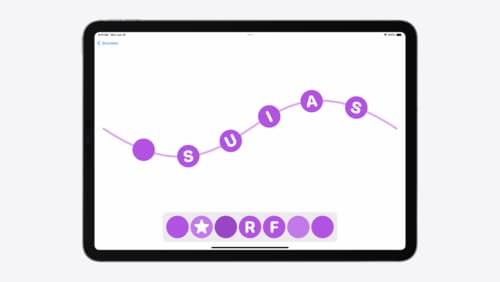can you tell me how view controller works with swiftui menu
Asked on 2024-08-02
1 search
To understand how a view controller works with a SwiftUI menu, you can look into the integration of SwiftUI with AppKit and UIKit. Here are the key points:
-
SwiftUI Menus in AppKit:
- You can use SwiftUI menus within AppKit contexts using
NSHostingMenu, a newNSMenusubclass. This allows you to share menu definitions between parts of your app that use AppKit and those that use SwiftUI. - To create a menu, define it using a SwiftUI view in the body. Use SwiftUI views like toggles, pickers, and buttons to describe the data relationships.
- Initialize an
NSHostingMenuwith the SwiftUI view and use it in any AppKit context that accepts anNSMenu, such as the newNSPopupButtoninitializer with a pull-down menu parameter. - For more details, you can refer to the session What’s new in AppKit.
- You can use SwiftUI menus within AppKit contexts using
-
SwiftUI and UIKit Integration:
- If you want to use a view or view controller from UIKit in SwiftUI, you can create a
UIViewRepresentable. This is a special SwiftUI view protocol for creating and updating an associated UIKit view using imperative code. - Conversely, to embed a SwiftUI view into a UIKit view hierarchy, you can use classes such as
HostingViewController. This is created with a root SwiftUI view and can be added to your UIKit view controller hierarchy. - This interoperability allows you to adopt SwiftUI incrementally in your existing apps or build new SwiftUI apps that incorporate UIKit views.
- For more details, you can refer to the session SwiftUI essentials.
- If you want to use a view or view controller from UIKit in SwiftUI, you can create a
-
SwiftUI Animations with UIKit and AppKit:
- SwiftUI animations can be used to animate UIKit and AppKit views. This involves using
NSAnimationContextor similar APIs to pass in a SwiftUI animation type and adjust your layout or drawing. - These animations are interruptible and retargetable, providing a powerful way to enhance your UI transitions.
- For more details, you can refer to the session Enhance your UI animations and transitions.
- SwiftUI animations can be used to animate UIKit and AppKit views. This involves using
Relevant Sessions
These sessions provide a comprehensive overview of how to integrate and use SwiftUI menus with view controllers in both AppKit and UIKit contexts.

What’s new in SwiftUI
Learn how you can use SwiftUI to build great apps for any Apple platform. Explore a fresh new look and feel for tabs and documents on iPadOS. Improve your window management with new windowing APIs, and gain more control over immersive spaces and volumes in your visionOS apps. We’ll also take you through other exciting refinements that help you make expressive charts, customize and layout text, and so much more.

Enhance your UI animations and transitions
Explore how to adopt the zoom transition in navigation and presentations to increase the sense of continuity in your app, and learn how to animate UIKit views with SwiftUI animations to make it easier to build animations that feel continuous.

SwiftUI essentials
Join us on a tour of SwiftUI, Apple’s declarative user interface framework. Learn essential concepts for building apps in SwiftUI, like views, state variables, and layout. Discover the breadth of APIs for building fully featured experiences and crafting unique custom components. Whether you’re brand new to SwiftUI or an experienced developer, you’ll learn how to take advantage of what SwiftUI has to offer when building great apps.
